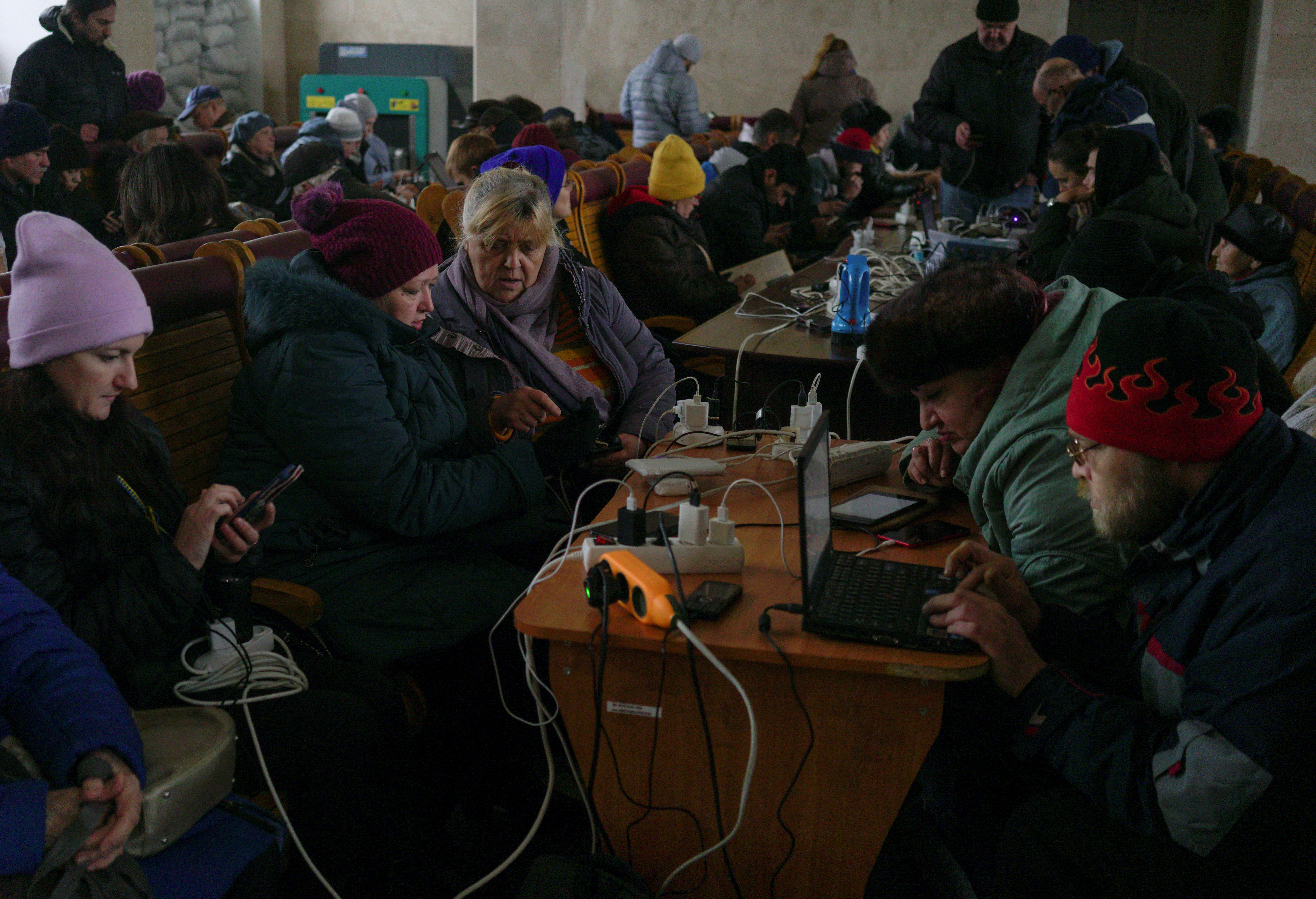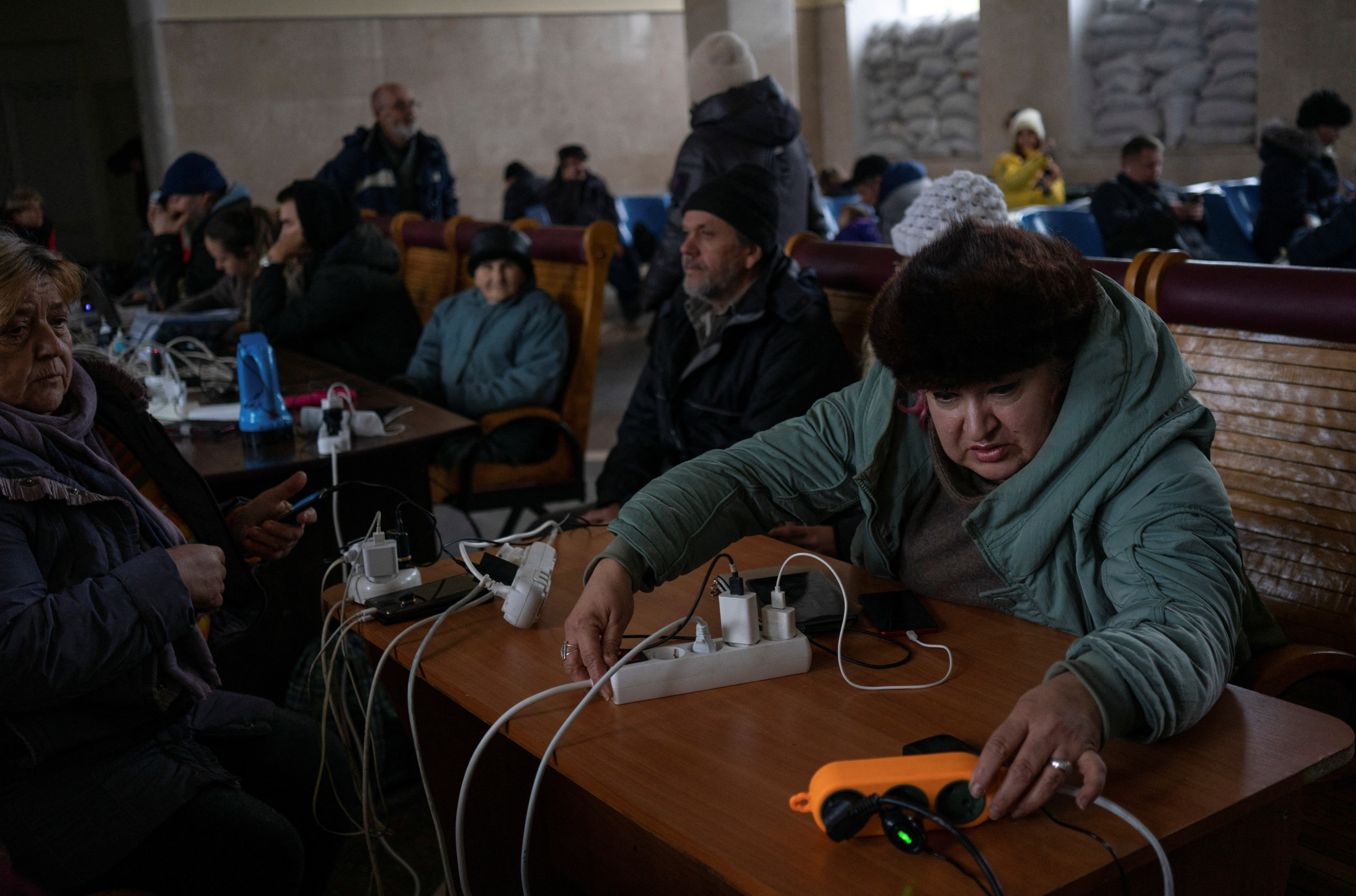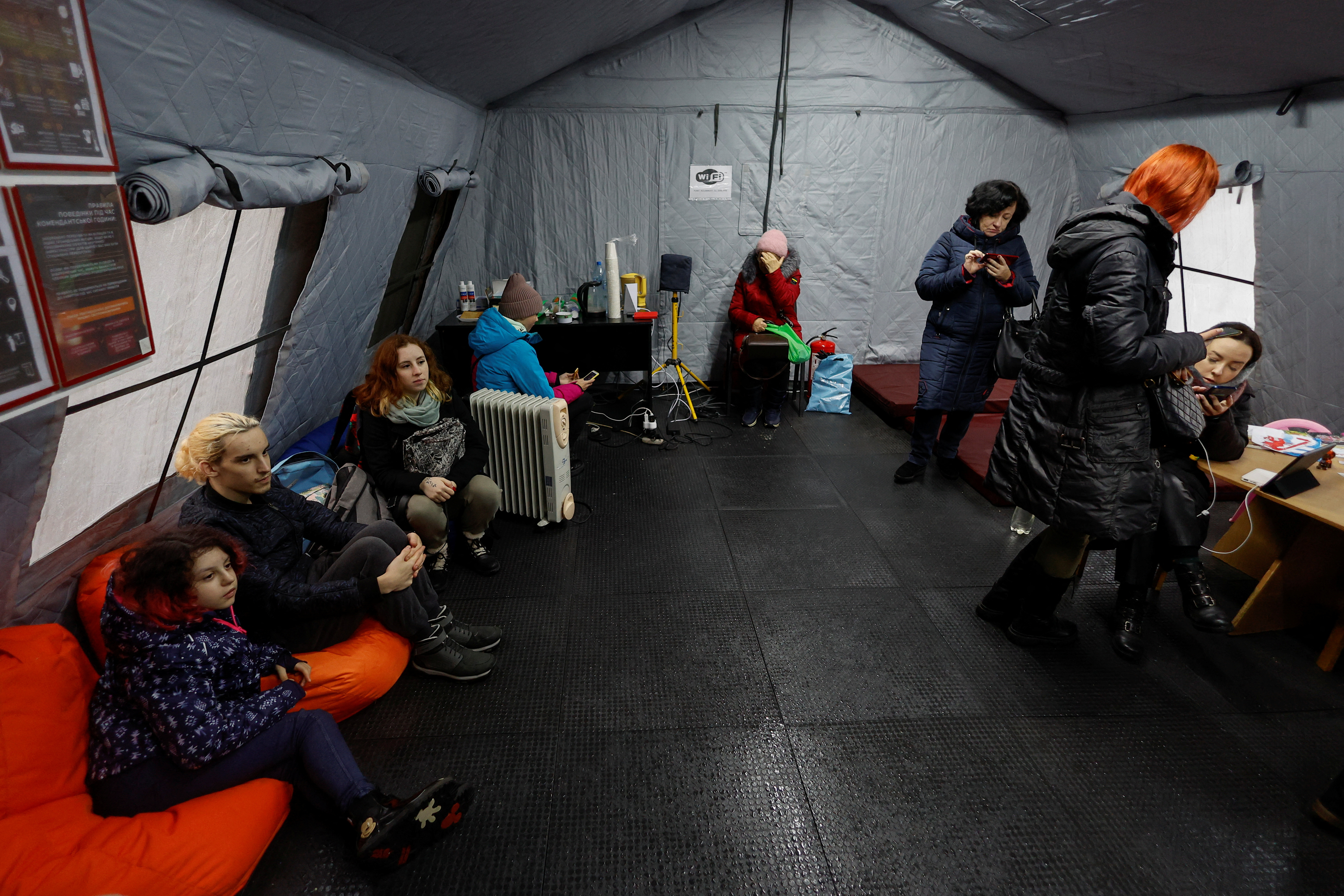Michael Novakhov retweeted:
Day: November 30, 2022
A coup attempt has been foiled in Sao Tome & Principe after a military barracks in the country’s capital came under attack on Friday, November 25. The attack comes about two months after São Tomé and Príncipe held parliamentary elections, which were won by Trovoada’s Independent Democratic Action (ADI) party. He was sworn in as prime minister earlier this month. The government has alternated several times between the two main parties: the centre-left Movement for the Liberation of São Tomé and Príncipe-Social Democratic Party; and Trovoada’s centre-right Independent Democratic Action (ADI). Both main parties (MLSTP and ADI) support continued relations with China, signaling a likely continuation of significant Chinese investment in the country. Beijing has got interest in the archipelago, as China plans to use Sao Tome and Principe as a strategic transport hub for the superpower.
Known for their political stability, the islands are located west of Angola and southwest of Equatorial Guinea and recently hosted Shell’s unsuccessful Jaca-1 exploration well.
Sao Tome & Principe’s Prime Minister Patrice Trovoada told a local radio station — Radio Somos Todos Primos: “We were targeted by an attempted coup, which began around 00:40 (Greenwich Mean Time) and was completed shortly after 06:00.”
Trovoada said some attackers were detained, while Delfim Neves, a former president of the National Assembly, was arrested. Neves ran in the 2011 presidential election and finished third with 14.36% of the vote. In 2018, Neves became the president of the Democratic Convergence Party. He was elected President of the National Assembly on 22 November 2018. Neves lost his position on November 11 when the new chamber was installed following elections in September, won with an absolute majority by Trovoada’s centre-right Independent Democratic Action (ADI) party.
In 2021 the third-placed candidate in the first round, Delfim das Neves, filed a petition against the result, alleging fraud. His suit was eventually rejected by the Constitutional Tribunal.
STP-Press, the islands’ state news agency, reported yesterday that 12 local military personnel and four Sao Tome citizens were involved in the assault on the barracks, citing Armed Forces’ Chief of Staff Olinto Paquete.
Thus, the operation was ordered by certain personalities from the country in complicity with certain others from within the army.
Trovoada said a key mover behind the operation was opposition leader Arlecio Costa, who he claimed once served in South Africa’s 32 (‘Buffalo’) Battalion, African mercenary group dismantled in 1993 by Pretoria (Namibia). This is the second time that this battalion seeks to carry out a coup d’état in the country, after the one in 2003. That coup was launched against the government of President Fradique de Menezes, and was led by Major Fernando Pereira. The coup leaders claimed that they had tried to overthrow the government to help stop poverty. The coup was led by members of the Christian Democratic Front, (a political party without seats in Parliament) in the region.
Costa was also held in 2009 over accusations of plotting an earlier coup in Sao Tome.
The African Union (AU) condemned the attempted coup, with its president Moussa Faki Mahamat calling it “unacceptable” and a “violation” of the AU’s principles of democracy.
Trovoada said a key mover behind the operation was Arlecio Costa, who he claimed once served in South Africa’s 32 (‘Buffalo’) Battalion, a special forces outfit active in what is now Namibia but which was disbanded in 1993. Costa was also held in 2009 over accusations of plotting an earlier coup in Sao Tome.
Everyone knows the girlboss era is over.
For almost a decade, the term denoted admiration for a woman who, through grit and determination, achieves the kind of powerful career historically reserved for men. But millennials have become disillusioned with Lean In-style dogmas that feel increasingly out of reach in our vastly unequal society. And stories of mismanagement and abuse at female-led companies have challenged the notion that women are inherently enlightened or progressive leaders.
In recent years, zeal for the girlboss has curdled into disdain. The girlboss has been eulogized in the press. She’s been pilloried in memes. On social media, the slogan “gaslight, girlboss, gatekeep” has become shorthand for a woman who seeks to ascend the ranks of a broken system rather than to change it.
Those trumpeting the death of the girlboss appear not to have watched the confused meditation on female empowerment that is the Netflix reality show My Unorthodox Life. Nor does the show’s star, Julia Haart, seem aware of this archetype’s newly ignominious status. A formerly Haredi rebbetzin (rabbi’s wife) who left her community to become a fashion mogul in the secular world, Haart has positioned her transformation from repressed housewife to leather-clad, latte-sipping executive as the core of her brand.
But in the show’s second season, fissures in that narrative start to appear. When Haart divorces her billionaire husband, Silvio Scaglia, she experiences a reversal of fortune that shouldn’t be possible for a woman who has it all — and, if inadvertently, exposes the problems with the girlboss version of female liberation.
Related
For those who choose to remain blissfully ignorant of Netflix’s incursions into reality TV, a little background: Hailing from Monsey, New York, Haart married and raised four children within a Haredi community she described as repressive and patriarchal. (Her characterizations of Monsey on My Unorthodox Life raised ire among some Haredi women, who used the briefly viral hashtag #myorthodoxlife to share stories of happiness and fulfillment within their communities.) In 2013, she got divorced and set out to try her luck in the fashion industry.
Just a few years after entering the secular world, Haart appeared to have achieved astounding success: She launched a line of shoes, designed a Met Gala dress for Kendall Jenner and, a few months before marrying Scaglia, become CEO and co-owner of Elite World Group, a modeling agency her husband had purchased several years earlier. Haart’s three adult children — Batsheva, an influencer, Shlomo, a shy student, and Miriam, a precocious coder — joined her in the marital penthouse and play prominent roles in My Unorthodox Life. (She and her first husband share custody of their youngest son, Aron, who remains involved in the Haredi world and appears intermittently on the show.)
 Julia Haart at her desk. Courtesy of Netflix
Julia Haart at her desk. Courtesy of Netflix
The first season of My Unorthodox Life focused on Haart’s exodus from Monsey, presenting her as an entirely self-made woman and attributing her success to her creative talent and ability to hustle. Scaglia, who made brief appearances to kiss Haart’s hand and call her “my love,” always seemed more like a posh-accented accessory than an actual spouse, and the couple’s divorce was extremely predictable.
What’s surprising is Scaglia’s power to upend his ex-wife’s life.
In Haart’s telling, she and Scaglia agreed to divorce without changing their professional relationship or their respective roles at Elite World Group. By the second episode, however, Scaglia has begun to assert total control over assets Haart considers jointly owned. In one surprisingly candid scene, Haart and her entourage are blindsided by an abrupt email announcing that the board has replaced her as CEO.
Scaglia subsequently asserts in lawsuits that he is the sole owner of the agency, and accuses Haart of such colorful improprieties as using company funds to pay for breast implants. He threatens to come to the aforementioned penthouse with movers to take away all the furniture; when Haart finds out that her former chef has snuck in during the night and stolen a piece of art, she concludes that Scaglia has paid him to do so.
Despite surrounding herself with the trappings of girlbossery, Haart isn’t living up to the untouchable persona she’s created. And there’s nothing inherently wrong with that. Perhaps because she left an insular community with few resources, perhaps because she worked in a sexist environment, perhaps because, as Scaglia’s allies have suggested, she’s just not a great leader, Haart ended up reliant on a man even as she made total independence her personal brand. As we reexamine the girlboss ideal, stories like hers, about women for whom sheer grit and independence do not yield empowered and fabulous lives, feel newly compelling.
But while Haart loves to kvetch about the time spent corresponding with her lawyers and make grave references to legal entities like the Chancery Court of Delaware, My Unorthodox Life does everything to avoid addressing the gap between her persona and her reality. The show can’t delve too deeply into the court documents, because to do so would inevitably produce a portrait of a flawed woman, not a tale of uncompromised empowerment. Instead, Haart clings to a personal narrative that increasingly seems like a myth. Again and again, she insists that Scaglia is spewing lies and that, despite the fact that the Chancery Court of Delaware repeatedly sides with him, she will eventually prove her point.
 Two of Julia Haart’s children, Miriam and Shlomo, console her after her husband Silvio Scaglia threatens to “empty the house” of furniture. Courtesy of Netflix
Two of Julia Haart’s children, Miriam and Shlomo, console her after her husband Silvio Scaglia threatens to “empty the house” of furniture. Courtesy of Netflix
As if to compensate for its obfuscation on the most interesting points, My Unorthodox Life devotes far too much airtime to various prurient or simply banal subplots. Shlomo halfheartedly attempts to lose his virginity. Robert, Haart’s closest friend and colleague (until Scaglia ousts them both) and his boyfriend Ra’ed have important conversations about their open relationship while shaving each other’s backs. Batsheva, recently divorced herself, is dating furiously — but also has to take Haart to therapy after she repeatedly overshares about her daughter’s sex life.
(Just a few weeks ago I wrote of Hulu’s new series Fleishman is in Trouble that “sex has never seemed worse or less appealing;” I regret to report that My Unorthodox Life is already compelling me to eat my words.)
Several of the show’s subplots feature Haart fighting for, in her own words, “freedom for as many women as humanly possible.” (It should be noted that she makes this comment in reference to helping a model develop a lucrative Instagram presence.) In one, Haart collaborates with Amber Adler, an Orthodox activist who unsuccessfully ran for New York City Council in 2021, to plan a safehouse for Jewish and non-Jewish women leaving abusive marriages. By supporting this cause, Haart can bolster her self-image as a benefactor, a woman who can give aid rather than receiving it.
In her own story, those demarcations — between freedom and dependence, success and defeat — are rarely so clear. Failure to conform to a chosen ideal of womanhood is the one thing that connects Haart’s improbable, gilded life to those of the women who might watch My Unorthodox Life. Yet for Haart, that failure is nothing more than a source of shame. Rather than address the contradictions that make her life interesting, the show simply retreats into pantsuit-shaped stereotypes.
Related
The post They hate to see a girlboss getting divorced: ‘My Unorthodox Life’ is back appeared first on The Forward.
Russia said its forces in eastern Ukraine had edged forward, Kyiv said Moscow was “planning something” in the south and NATO sought on Wednesday to shore up other countries that fear destabilisation from Moscow.
Ukraine’s General Staff said earlier that its troops had repelled six Russian attacks in 24 hours in the eastern Donbas region, while Russian artillery had relentlessly shelled across the Dnipro River, including at Kherson city, in the south.
Kyrylo Tymoshenko, deputy head of Ukraine’s presidential administration, said electricity had been restored to 65% of consumers in Kherson. Russians have been shelling the southern city since they withdrew earlier this month.
Winter weather has hampered fighting on the ground, and President Volodymyr Zelenskiy has told citizens to expect a major Russian barrage this week on Ukraine’s stricken electricity infrastructure, which Moscow has pounded roughly weekly since early October.
“These are President (Vladimir) Putin’s new targets. He’s hitting them hard,” U.S. Secretary of State Antony Blinken said after NATO talks in Bucharest.
Putin has focused his “fire and ire” on Ukraine’s civilians by bombing more than a third of its energy system supplying power and water, but the strategy will not work, Blinken said.
The U.S.-led military alliance was also concerned about China’s cooperation with Russia, Blinken said.
NATO allies offered on Wednesday to help nearby Moldova, Georgia and Bosnia, Secretary-General Jens Stoltenberg said, adding they were all under pressure from Russia.
“If there is one lesson from Ukraine it is that we need to support them now,” Stoltenberg told a news conference. Estonian Foreign Minister Urmas Reinsalu told Reuters, “The beast also wants to take control of the Western Balkans”.
Zelenskiy said Russian forces were attacking Ukrainian government-controlled areas of Donetsk and Luhansk provinces which make up the eastern Donbas, as well as Kharkiv in the northeast, where Ukraine pushed them back in September.
“The situation at the front is difficult,” the president said in his Tuesday night video address.
“Despite extremely large losses, the occupiers are still trying to advance” in the east and “they are planning something in the south,” he said, without elaborating.
A teenager was killed when Russia shelled a hospital in the northern Sumy region and another person was killed and one wounded in Russia’s Kherson shelling, other officials said.
Russia said later its forces had taken full control of three settlements in the Donetsk region – Andriivka, Belogorovka and Pershye Travnya – and destroyed a warehouse in the southeastern Dnipropetrovsk region containing U.S.-made HIMARS shells.
Reuters could not independently verify the battlefield reports.
NATO ministers meeting for two days in Bucharest pledged both to help Ukrainians cope with what Stoltenberg said was Moscow using winter weather as “a weapon of war” and to help sustain Kyiv’s military campaign.
Russian Foreign Ministry spokeswoman Maria Zakharova said the outcome showed NATO was “absolutely not interested in a political and diplomatic solution in Ukraine”.
Washington pledged $53 million to buy power grid equipment, and U.S. President Joe Biden said providing more military assistance is a priority. Republicans, who take control of Congress’ House of Representatives in January, have talked about pausing the funding, which has exceeded $18 billion.
In Kyiv, snow fell and temperatures were expected to remain below freezing as millions in and around the capital struggled to heat their homes after attacks on infrastructure that Kyiv and its allies say are aimed at harming civilians, a war crime.
Workers have raced to repair the damage even as they anticipate more. Electricity supplies crept back up towards three-quarters of needs, national grid operator Ukrenergo said, a full week after the worst Russian barrage so far.
In a grim sign of the energy crisis, nine people have been killed in fires over the past 24 hours as Ukrainians resorted to emergency generators, candles and gas cylinders in violation of safety rules to try to heat their homes after power outages, according to the state emergency service.
Russia, which has declared large parts of eastern and southern Ukraine annexed, says Ukrainians can end their suffering by accepting demands it has not spelled out. Ukraine says it will fight until Russia withdraws completely.
“The war will end when we win, or when Russia wants it,” Zelenskiy said in a video interview on Wednesday with the New York Times. “The Russian Federation may only want that when it feels that it is weak, isolated and has no partners.”
The European Union said it aims to use proceeds from investing Russian assets it has frozen to help compensate Ukraine for the damage Moscow has inflicted, and proposed the establishment of a court to try “Russia’s crime of aggression”.
Kyiv welcomed the moves, saying Moscow had no legitimate goals in its invasion of Ukraine, which started in late February and has displaced millions, killed thousands of civilians and left cities, towns and villages in ruins.
Russia says the freezing of assets is theft, and denies that the invasion, which it calls a “special military operation” to disarm its neighbour, constitutes the war crime of aggression.
Related Galleries:













U.S. job openings decreased in October, but remained significantly high, pointing to continued labor market resilience despite the Federal Reserve’s efforts to cool demand by aggressively raising interest rates.
The tight labor market keeps the Fed on course to continue tightening monetary policy, heightening the risks of a recession next year. Most economists, however, believe any downturn will likely be short and mild because of the unprecedented jobs market strength.
Fed Chair Jerome Powell said on Wednesday the U.S. central bank could scale back the pace of its rate increases “as soon as December,” but cautioned that the fight against inflation was far from over.
“Elevated job openings during a time of an economic slowdown implies that the labor market may remain tight for quite some time,” said Jeffrey Roach, chief economist at LPL Financial in Charlotte, North Carolina. “Firms could hoard workers even though the economy may go through a recessionary period.”
Job openings, a measure of labor demand, decreased 353,000 to 10.3 million on the last day of October, the Labor Department said in its monthly Job Openings and Labor Turnover Survey, or JOLTS report. It was the 16th straight month that job openings remained above 10 million.
October’s job openings were in line with economists’ expectations. There were 1.7 job openings for every unemployed person in October, down from 1.9 in September. Last month’s decrease in job openings was led by state and local government, excluding education, where vacancies dropped by 101,000.
There were 95,000 fewer job openings in nondurable goods manufacturing, while federal government vacancies fell by 61,000. But there were 76,000 additional job openings in other services and unfilled positions increased by 70,000 in the finance and insurance industry.
The job openings rate fell to 6.3% from 6.5% in September. Hiring slipped to 6.0 million from 6.1 million in September.
The Fed’s Beige Book on Wednesday found that while difficulties hiring and retaining workers continued to ease, “labor markets were still described as tight.”
Mounting recession fears appear to have taken some of the steam out of the great resignation movement. About 4.0 million people quit their jobs, down from 4.1 million in September.
The quits rate, viewed by policymakers and economists as a measure of job market confidence, fell to 2.6% from 2.7% in the prior month. Layoffs increased to a still-low 1.4 million from 1.3 million, leaving the layoffs rate unchanged at 0.9%.
“The data suggest only very little loosening in the labor market so far,” said Isfar Munir, an economist at Citigroup in New York. “It will be difficult for the Fed to be anything but hawkish at the moment.”
The U.S. central bank has raised its policy rate by 375 basis points this year from near zero to a 3.75%-4.00% range in what has become the fastest rate-hiking cycle since the 1980s. Economists expect half-a-percentage point increase at the Dec. 13-14 meeting.
U.S. stocks rallied on Powell’s comments. The dollar fell against a basket of currencies. U.S. Treasury prices rose.
The elevated level of job openings also suggests worker shortages persist, which economists said were contributing to the slowdown in job growth. Private employment increased by 127,000 jobs in November, the smallest gain since January 2021, the ADP National Employment report showed on Wednesday.
Labor market strength is helping to drive consumer spending, supporting the overall economy. A fourth report from the Commerce Department showed the economy rebounded more strongly than initially thought in the third quarter.
Gross domestic product increased at a 2.9% annualized rate, the government said in its second estimate of third-quarter GDP. That was revised up from the 2.6% pace reported last month. The economy had contracted at a 0.6% rate in the second quarter.
The upward revision reflected upgrades to growth in consumer and business spending as well as exports, which offset the drag from a slower pace of inventory accumulation. But residential investment contracted for the sixth straight quarter, the longest such stretch since the housing market collapse in 2006.
When measured from the income side, the economy grew at a 0.3% rate. Gross domestic income (GDI) had contracted at a 0.8% pace in the second quarter. In principle, GDP and GDI should be equal, but in practice diverge as they are estimated using different and largely independent source data.
The income side of the growth ledger was driven by wages.
The average of GDP and GDI, also referred to as gross domestic output and considered a better measure of economic activity, increased at a 1.6% rate in the July-September period after shrinking at a 0.7% pace in the second quarter.
Profits from current production decreased $31.6 billion in the third quarter after rising $131.6 billion in the second quarter. Profits were, however, impacted by penalties and fines imposed on some businesses by federal and state agencies.
A fifth report from the Commerce Department showed the goods trade deficit surged 7.7% to $99.0 billion last month as exports declined. October’s sharp widening in the deficit suggested trade could be a drag on GDP in the fourth quarter.
The Commerce Department also reported that wholesale inventories increased 0.8% in October after rising 0.6% in September. Retail inventories fell 0.2% after dipping 0.1% in September. Motor vehicle stocks increased 0.4%.
Excluding motor vehicles, retail inventories slipped 0.4% after dropping 0.9% in September.
This component goes into the calculation of GDP. Inventories subtracted from GDP growth in the third quarter.
Related Galleries:





The U.S. Food and Drug Administration said on Wednesday Eli Lilly and Co’s (LLY.N) COVID-19 drug bebtelovimab is not currently authorized for emergency use in the country as it is not expected to neutralize the dominant BQ.1 and BQ.1.1 subvariants of Omicron.

Japan’s Eisai Co (4523.T) plans to seek full approval of its experimental Alzheimer’s drug lecanemab in the United States, Europe and Japan armed with data showing it can slow the brain-wasting disease for people with early symptoms, potentially getting the treatment to patients next year.
It remains unclear how widely the drug developed with U.S. biotech Biogen Inc (BIIB.O) will be used due to uncertainty over insurance coverage, including the U.S. government’s Medicare plan for people age 65 and over, potential side effects and cost.
One Wall Street analyst said he is not counting on measurable sales until 2024. Several estimated lecanemab may be priced at around $20,000 per year.
“Most people who this (drug) would apply to are on Medicare, and most private payers look to Medicare as they make their own (coverage) decisions. So there’s a massive roadblock in the way of all who could benefit from this treatment,” said Robert Egge, Alzheimer’s Association chief public policy officer
Eisai confirmed on Tuesday that lecanemab – an antibody designed to remove sticky deposits of a protein called amyloid beta from the brain – reduced the rate of cognitive decline on a clinical dementia scale by 27% compared to a placebo. It also gave new details on side effects including a dangerous type of brain swelling and brain bleeding.
The companies have already applied for accelerated approval with the U.S. Food and Drug Administration and expect a decision by Jan. 6. The new data will allow them to apply for full approval within days of that decision, Eisai’s U.S. CEO Ivan Cheung said in an interview.
“The medication is only for people in the very early stages of Alzheimer’s,” said Dr. Babak Tousi, a neuro-geriatrician at the Cleveland Clinic. These are people with some memory impairment but who can still engage in daily activities such as manage finances and medications, prepare meals and drive. “This is a very, very small, selective group,” he said.
Guggenheim Partners analyst Yatin Suneja said he expects the drug to get full U.S. approval in the second half of 2023, adding that Medicare would likely wait for formal approval before deciding on coverage terms.
Most U.S. Alzheimer’s patients are insured through Medicare, which will only cover patients in clinical trials for anti-amyloid drugs that have received a less stringent accelerated approval, severely limiting access to such medicines. There are no such trials ongoing, Egge said.
Michael Irizarry, Eisai’s deputy chief clinical officer, told Reuters ahead of the data release that the company has been in discussions with the agency about reconsidering its policy on Alzheimer’s drug coverage.
It is unclear how long the U.S Centers for Medicare & Medicaid Services (CMS) might take to make such a coverage determination. Irizarry said a formal process between Eisai and CMS could not begin until after the drug is approved.
CMS did not provide an immediate comment.
RBC Capital Markets analyst Brian Abrahams said he expects limited sales revenue from lecanemab in 2024.
“CMS might wait for full approval of the drug in the back half of next year before potentially broadening (its policy) and enabling coverage of lecanemab,” Abrahams said.
He estimated about 23,000 U.S. patients for the drug in the first year, rising to over 300,000 by 2031.
In a June study on lecanemab’s worth, Eisai said based on mid-stage trial data indicating the drug’s effectiveness, a price between $9,249 to $35,605 per year represented a good value. The drug is given by infusion every two weeks based on a patient’s weight.

Pay $5 to Palmer Report:
![]()
Pay $25 to Palmer Report:
![]()
Pay $75 to Palmer Report:
![]()
Pay $5 to Palmer Report:
![]()
Pay $25 to Palmer Report:
![]()
Pay $75 to Palmer Report:
![]()
Sign up for the Palmer Report Mailing List.
Donald Trump truly believes he is untouchable. He says and does whatever he wants with no consequences, so who can blame him? One can only wonder what will become of his latest admission. He is potentially facing criminal charges regarding the documents he took from the White House to his resort in Florida, including classified documents, but does he care? Of course not. He has gotten away with so much for so long that he thinks himself “Teflon Don.” Some might disagree with Trump. Raw Story broke the news Monday.
Trump apparently posted his confession on his social media site. According to Raw Story, Trump admitted to stealing the documents, concealing them, and lying about it to the FBI. The DOJ is investigating these very acts, which are criminal. He has, in essence, admitted to the charge of obstruction. Why he hasn’t been arrested is a mystery. Typically when a criminal confesses to a crime, he or she is immediately handcuffed and taken to jail. Trump has not only confessed, but he did so in writing. Trump, of course, claims that he has done nothing more than past presidents, which is a blatant lie, and he also claims that Hillary Clinton’s home should have been “raided” to search for “the 33,000 emails she deleted AFTER receiving a subpoena.” Another lie. He exacerbated his lie by claiming that while other presidents also stole documents, they weren’t nearly as “transparent” as Trump has been. Trump is about as transparent as mud.
According to AlterNet, Trump’s confession is merely another attempt to “change the narrative” on negative stories about him, the latest of which is his dinner with Kanye West and Nick Fuentes. Mostly, Trump wants people to quit bugging him about denouncing white supremacism because he is one himself. How can he denounce a group of which he is a card-carrying member? That must be the only reason he doesn’t denounce them. He knows how most of this country feels about that ilk. Yet, he wants to run for president again, after admitting that he is a low-life thief and a racist. Good luck with that.
Mary McCord, Acting Assistant Attorney General for National Security, said that had Trump merely claimed that he mistakenly taken the documents, the conversation now would be very different. Instead, he lied, had his lawyers sign a certification, and dodged the question for months. All point to his guilt. Andrew Weissman, former special counsel on Robert Mueller’s team, knows Trump well. He has been personally attacked by him, and he knows Trump’s games. Weissman believes that Trump is saying: “Oh, I openly and notoriously took these documents, but I believed they were my personal documents.” No one believes that except Trump.
The biggest problem with Donald Trump is that he is delusional. He still believes that flocks of people are buying into his nonsense, but his approval rating shows that to be false. He also still believes he’s the smartest man in the room, when he is the dumbest man on the planet. At this point, every stupid thing that comes out of his mouth is merely helping Jack Smith put together his case.
Pay $5 to Palmer Report:
![]()
Pay $25 to Palmer Report:
![]()
Pay $75 to Palmer Report:
![]()
Write for the Palmer Report Community Section.
Pay $5 to Palmer Report:
![]()
Pay $25 to Palmer Report:
![]()
Pay $75 to Palmer Report:
![]()
The post Donald Trump just flat out admitted it appeared first on Palmer Report.
A showdown over a looming railroad strike heads to the Senate floor this week, after a group of progressive Democrats, led by Rep. Jamaal Bowman, D-N.Y., pushed to modify a tentative agreement to include seven days of sick leave. The expanded agreement passed the House 220-206 on Wednesday, and the fight now moves to the Senate, where it remains unclear if there is enough Republican support to overcome a filibuster and send the agreement to President Joe Biden’s desk.
The original agreement was approved by a bipartisan majority, 290-137, with the extra sick days added as an “enrollment correction.” With a strike deadline approaching, Senate Democrats have the choice of insisting Republicans approve the expanded agreement, or folding and allowing the original agreement, which includes just one sick day, to move through. Aside from Sen. Bernie Sanders, I-Vt., and a handful of allies, there appears to be little appetite for such a fight.
The tentative agreement was brokered by Biden and has been publicly rejected by the rank-and-file members of the union. Federal law, however, allows Congress to impose labor agreements in the rail industry to avert strikes. The single day of sick leave itself represented a breakthrough. Time off is an especially contentious issue because the companies have stripped the number of staff on a single train well below the bare bones. With often just two staff for an entire train, if one calls out sick, the entire system is threatened, leading to draconian attendance policies in order to maximize profits.
On Monday, House Speaker Nancy Pelosi had told her caucus that there would be an up-or-down vote on the tentative agreement between the companies and the unions, with no amendments allowed. “This week, the House will take up a bill adopting the Tentative Agreement — with no poison pills or changes to the negotiated terms — and send it to the Senate,” she said.
But Bowman introduced a measure to give seven days of sick leave, joined by the other five members of the Squad and Rep. Chuy Garcia, D-Ill. In the Senate, Sanders floated a companion version. Public pressure quickly led Pelosi to say she would, after all, allow for a vote on changes to the deal, sending out a new letter on Tuesday night amending her approach. On Wednesday, the Congressional Progressive Caucus announced it had reached a deal to support the new floor strategy, which creates two separate votes that would allow the Senate to reject the expanded agreement and pass the original agreement without it needing to come back through the House.
The Senate vote puts pressure on a Republican Party that has increasingly positioned itself as a champion of the working class. Sen. Marco Rubio, symbolic of that attempted transformation, said Tuesday he would follow the lead of the workers.
The railways & workers should go back & negotiate a deal that the workers,not just the union bosses,will accept
But if Congress is forced to do it,I will not vote to impose a deal that doesn’t have the support of the rail workers
— Marco Rubio (@marcorubio) November 29, 2022
On Tuesday, Sen. John Cornyn, the influential Republican from Texas, signaled openness to expanding sick days to seven, but on Wednesday walked it back. “I just think it’s a bad idea for Congress to try to intervene and renegotiate these collective bargaining agreements between labor and management,” he said.
Rep. Alexandria Ocasio-Cortez, D-N.Y., told Punchbowl News’s Jake Sherman she was fighting “tooth and nail” for the seven days of leave, calling it a “showdown.”
With agreement in the House and a deadline for a strike looming, the dynamics put Senate Republicans in the awkward position of forcing a rail strike in order to block workers from getting an extra six days of sick leave, a position that might be difficult to defend politically amid the economic pain that would be caused by a strike — and that could be ended simply by Republicans agreeing to allow modest time off. But if and when they block the expanded agreement, pressure will be on Democrats to pass the weaker deal and avert the strike.
“Put up or shut up,” said Sanders on MSNBC. “If you can’t vote for this, to give workers today, who really have hard jobs, dangerous jobs, if you can’t guarantee them paid sick leave, don’t tell anybody that you stand with working families.”
Sanders and 12 colleagues with a statement on the rail legislation. That’s the floor of support for the sick leave amendment, which needs 60. pic.twitter.com/f6L3em3VEL
— David Dayen (@ddayen) November 30, 2022
As lawmakers scramble to pass a deal before the December 9 deadline when workers are allowed to strike, unions have hailed lawmakers’ efforts to add sick days into their contract.
The Brotherhood of Maintenance of Way Employes “applauds the representatives in Congress and any Senators that will stand in support of Railroad Workers receiving paid sick leave,” Peter Kennedy, a spokesperson for BMWED, which represents tens of thousands of union rail workers, told The Intercept. “The additional legislation needs to pass so that Railroad Workers will have basic protections against illness, and protection from punishment from the railroads when workers are most vulnerable.”
Railroad companies have spent years softening legislators in preparation for such a moment. As the fight moves to the Senate, it will do so under a Congress whose members have been the recipients of at least $20 million in campaign cash from the rail industry over the past decade.
A coalition of over 400 trade groups signed a letter to congressional leaders on Monday, calling for Congress to act to avert a rail strike. “While a voluntary agreement with the four holdout unions is the best outcome, the risks to America’s economy and communities simply make a national rail strike unacceptable,” they wrote.
A review of campaign finance records shows 19 members of Congress who have received at least $10,000 each from railroad companies in the past election cycle. Another 130 members each received at least a $1,000 contribution from either rail operators or the Association of American Railroads, the largest industry trade group. According to OpenSecrets, AAR has spent over $3.5 million on lobbying this year, consistent with past trends.
Since 2020, the rail companies Union Pacific and BNSF — which have both been locked in tense negotiations with the unions — spent nearly $1.5 million each in direct contributions and donations to congressional campaign political action committees. The two massive employers, along with rail operator Northern Southern, have spent the past decade scaling back their workforces, refusing to give sick days to workers, and operating dangerously understaffed trains.
The Teamsters, which absorbed the Brotherhood of Maintenance of Way Employees in 2004, donated just under $1.5 million to political candidates during the 2022 election cycle. BMWED and two other unions — the Brotherhood of Railroad Signalman and the Sheet Metal, Air, Rail and Transportation Union — also lobbied Congress this year to the tune of $55,000. The PAC for SMART contributed over $1.5 million to political candidates this cycle, while the PAC for the Brotherhood of Locomotive Engineers and Trainmen gave $260,000.
Recipients of Union Pacific’s cash infusion include $30,000 donations to the Democratic Congressional Campaign Committee, the Democratic Senatorial Campaign Committee, the National Republican Senatorial Committee, and the National Republican Congressional Committee. Union Pacific also contributed $10,000 to Sens. Patty Murray, Tammy Duckworth, John Hoeven, John Boozman, and made slightly smaller contributions to Sens. Joe Manchin and Marco Rubio. In the 2022 cycle, the rail company also spent hundreds of thousands of dollars on over 120 House candidates from both parties.
Following Union Pacific’s lead, BNSF contributed $30,000 donations to the National Republican Congressional Committee, Democratic Congressional Campaign Committee, and Democratic Senatorial Campaign Committee. It also gave contributions of $10,000 or more to the PACs affiliated with Sens. Patty Murray, Jerry Moran, Susan Collins, Lindsey Graham, John Thune, James Lankford, Marsha Blackburn, Ben Sasse, Dan Sullivan, Mitch McConnell, John Hoeven, Jon Tester, John Cornyn, Gary Peters, Jack Reed, Debbie Stabenow, and Mark Warner, alongside Reps. Jim Clyburn and Kay Granger.
Union Pacific and Norfolk Southern often compete for the first and second-lowest ratings on Glassdoor for any employer in the U.S. In February, BNSF — which is controlled by billionaire Warren Buffett’s firm Berkshire Hathaway — began penalizing workers taking time off for “fatigue, family emergencies, or illness.” At the same time, a federal judge ruled a rail strike illegal.
“This should not be a political issue,” said Kennedy, the BMWED spokesperson.“This is an issue about protecting our workers who ensure the nation’s rail infrastructure and supply chain function as best as possible. Representatives on both sides of the aisle should unanimously support paid sick days for railroad workers because it is good for the railroads, it is good for their customers, it is good for the American economy, and it is good for the long-term stability and vitality of the railroad industry.”
The post Railroads Have Invested Heavily in Congress. They Need Their Payoff in the Senate. appeared first on The Intercept.



